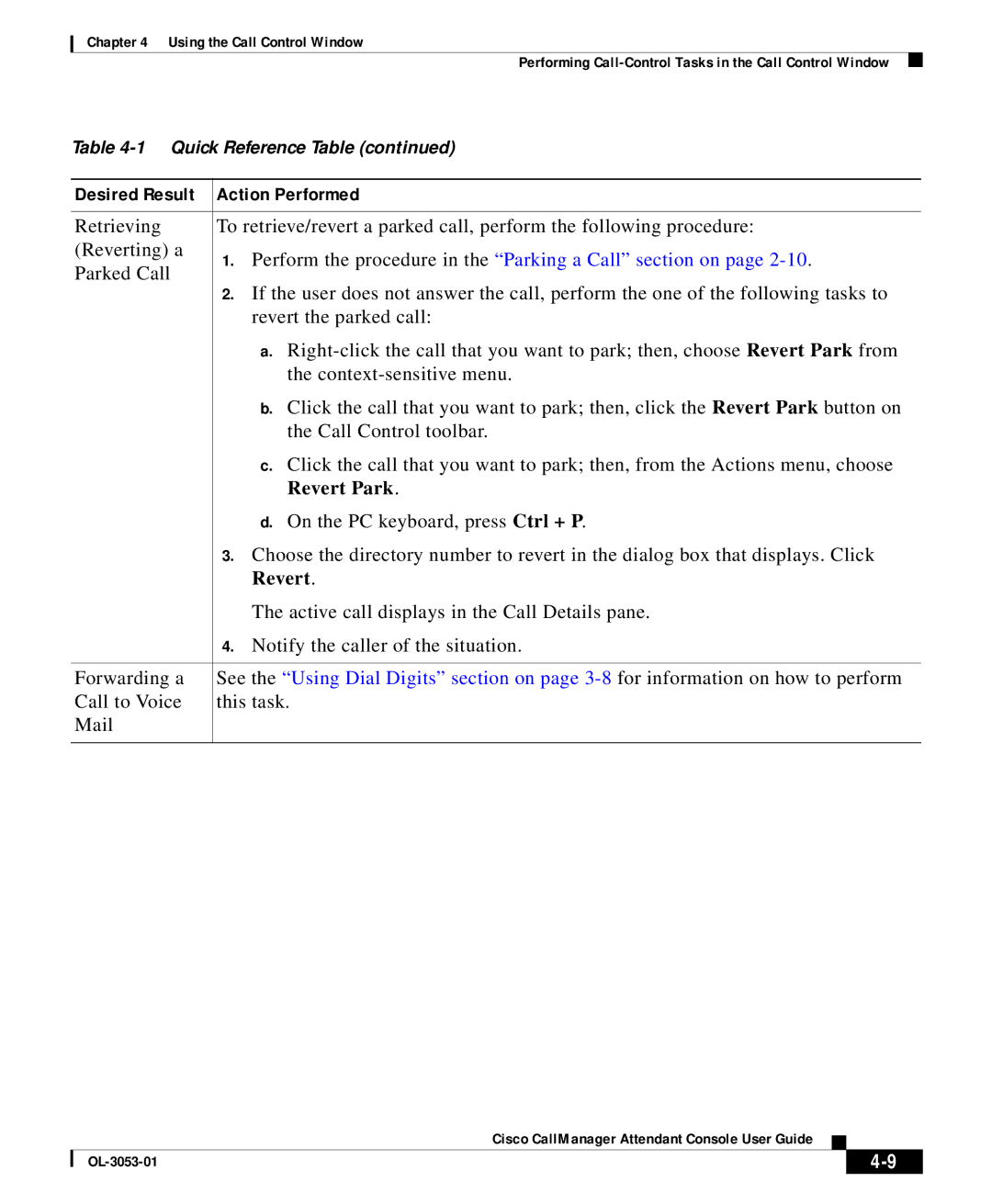OL-3053-01 specifications
Cisco Systems OL-3053-01 is a comprehensive course designed for networking professionals seeking to deepen their expertise in routing and switching technologies. This course is instrumental in equipping learners with the necessary skills to implement and manage networks efficiently, making it essential for those pursuing certifications or looking to advance their careers in the field of networking.One of the main features of OL-3053-01 is its focus on the Cisco IOS (Internetwork Operating System), which is fundamental in the management of Cisco devices. Students learn about various commands, functionalities, and configurations that allow for seamless network operations. The course delves into routing protocols such as OSPF, EIGRP, and BGP, offering insights into their deployment, configuration, and troubleshooting. By mastering these protocols, learners will be prepared to design robust networks capable of handling diverse traffic loads.
Another significant aspect of the OL-3053-01 course is its emphasis on VLANs (Virtual Local Area Networks) and subnetting. This segment teaches students how to create scalable networks that improve performance and security. The course covers the best practices for designing a VLAN architecture, implementing Inter-VLAN routing, and understanding the implications of subnetting in network design.
In addition to routing and switching, students explore advanced technologies such as network security measures and Quality of Service (QoS). The course discusses firewall configurations, VPNs, and access control lists (ACLs), all crucial for securing network infrastructures. QoS principles ensure that important network traffic is prioritized, enhancing the performance of time-sensitive applications like VoIP and video conferencing.
Hands-on labs and simulations are pivotal to the OL-3053-01 experience, allowing students to apply theoretical knowledge in practical scenarios. This experiential learning approach ensures that learners can confidently manage real-world networking challenges.
Overall, Cisco Systems OL-3053-01 stands out as an essential learning pathway for networking professionals aiming to advance their skills in routing and switching. With its focus on core Cisco technologies and practical applications, this course is an invaluable asset for anyone looking to excel in the dynamic world of networking. By completing OL-3053-01, participants will not only become proficient in managing complex networks but will also enhance their career prospects in the ever-evolving tech landscape.

